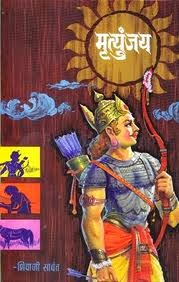The railways were first introduced in the Indian subcontinent from Bombay to Thane, a modest 34 km journey. In 1951, the railway system was nationalised as one unit, known today as the Indian Railways, becoming one of the world's largest networks. Today, Indian Railways is the world's ninth largest commercial or utility employers, by number of employees. Hence, it would not be wrong to say that India has had a rich railway heritage.
The static exhibition of railway relics began in the late nineteenth century when items from the early days of the railways were put aside, rather than being discarded or sold as scrap. To such men goes the credit for the preservation of early railway history. The first museum devoted purely to the railways is said to be that of Hamar, in Norway as it was set up in 1896. John Westwood in his book Railway Preservation writes, "One of the world's most beautifully situated museums. Its collections include documents, pictures, track and signals, passenger cars and locomotives. Especially, the locomotives, like many similar museum, include early British models, demonstrating the leading role in Britain in early railway technology."
India's first transport museum, the National Railway Museum in Chanakyapuri, New Delhi is home to some of India's finest and rarest locomotives. Situated behind the embassy of Bhutan in New Delhi, the museum is spread over 11 acres of land. The idea of the railway museum in India was initially conceived in 1962 though the idea was accepted only in 1970 and was formally inaugurated in 1977. The museum, being the first of its kind in India, is located both indoors and outdoors. The administrative wings and other departments are located in an elegantly designed octagonal building.
 |
| Early rakes of the Neral-Matheran Railway |
 |
| WDM-2: The first diesel engine of ALCO |
The outdoor exhibits are true crowd-pullers and has plenty of open space. The open spaces display various real-life exhibits with lines of different gauges and specimens of railway engines such as WDM-2 18040, the first diesel engine built byAmerican Locomotive Company (ALCo) and the earliest rakes of the Neral--Matheran Light Railway.
 |
| The Fairy Queen: The oldest surviving steam engine |
The yard houses several vintage locomotives, carriages, complete royal armoured trains and various other exhibits, the most notable being The Fairy Queen. The Fairy Queen is the world's oldest surviving steam engine which was originally purchased by the East India Railways (EIR) in 1855. In one corner, stands the rake of the Palace on Wheels, India's first premier luxury train.
Each locomotive is kept in a good condition, having been restored and maintained on a regular basis. The locomotives have dedicated plaques which give tourists a brief synopsis about the history of each engine and the respective carriages. While some engines are placed in sheds, most are in the open. A prominent feature of the railway museum is the turntable. A turntable is used primarily to change the direction of the train and switch it to a different track, which in this case, happens to be part of the museum's mini railway network.
The indoor sections of the museum has some magnificent live exhibits also including a museum section which houses models of railway engines and coaches. It also has write-ups which chart the evolution of India's railway network. There are working as well as still scale models of various railway engines and coaches that have been used by the Indian Railways over the years. Also on display are a number of historic photographs, documents and coats-of-arms. One can also find a number of antique furniture pieces on display along with various instruments that have been used by the Indian Railways in the past in addition to mannequins.
 |
| The Pamban Bridge in Rameswaram |
There is the working model of the famous Pamban Bridge near Rameswaram built by the Southern Railway in 1911-1913 to shorten the journey from Tuticorin to Colombo by roughly 12 hours. The bridge has 145 deck type spans of 40 feet girders and two leaf "Scherzer" rolling life bridge. The length of the viaduct in total is 2.15 km. When the "Scherzer" span is lifted, it permits ships to pass. A cyclone in December 1964 resulted in washing off nearly 124 spans of this viaduct. The girders were salvaged from the sea and the bridge was restored to traffic in a record time of two months.
 |
| WDM4: India's first Electro Motive Diesel locomotive |
Apart from models, the museum also has a mini toy train network that goes around the museum in a circular format mainly designed to attract kids. It also has some interesting exhibits such as a collection of builder plates of companies that have constructed some of the locomotives which are on display such as the WDM-4 locomotive, India's first EMD locomotive.
 |
| Early rakes of Mumbai Local Trains |
 |
| Lifeline Express: India's first hospital-on-wheels train |









Comments